When a recipe calls for “blanched almonds,” do you run to the store to buy a bag? No need! You can easily skin a batch of almonds using the simple method outlined below.
Certain recipes, like almond milk, require the use of skinless almonds. Removing the skin gives the almonds a smooth texture, which is helpful in making dishes like almond flour, almond butter, or marzipan.
Blanching your own almonds is more cost-effective than buying the skinless kind at the grocery store, and it only takes a minute… literally, just one minute! You’ll never spend the extra money on pre-blanched options again.
What Does It Mean to Blanch Almonds?
Blanching almonds means removing their brown skins to reveal the smooth, ivory-colored nut beneath. The process involves briefly boiling the almonds, then cooling and slipping off the skins. It’s a common step in many baked goods, as well as some traditional Jewish, Mediterranean, and Middle Eastern dishes.
Why Blanch Almonds?
Blanched almonds have a milder taste, smoother texture, and are easier to use in baked goods, sauces, and homemade nut milks. Many classic recipes, like almond cake or almond paste, call specifically for blanched almonds. Learning how to blanch almonds yourself can save money and give you fresher, cleaner flavor in your cooking.
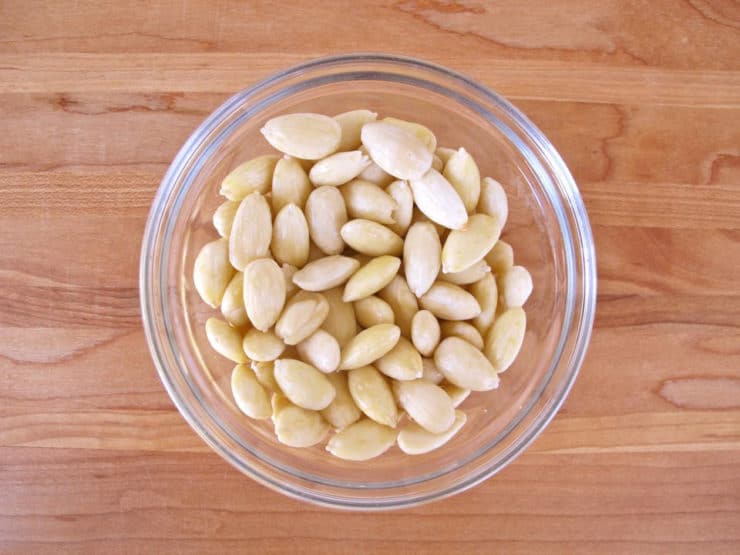
How to Blanch Almonds (Step-By-Step Guide)
All you need for this recipe is raw almonds (not roasted or salted), boiling water, and a medium-sized bowl of ice water. Here are my simple steps:
- Boil water. Bring a small pot of water to a boil
- Add almonds. Once boiling, carefully add your raw almonds to the water. Let them boil for about 60 seconds. Don’t go beyond this! Overcooking can make them soft and soggy.
- Drain and rinse. Drain the almonds using a colander. Then, rinse with cold water or plunge them into a bowl of ice water to cool.
- Remove the skins. Gently pinch each almond between your fingers. The skin should slide right off. Pat them dry with a clean towel before using or storing.
Tori’s Tips
- Avoid soaking almonds for too long or boiling for over a minute. This can cause them to lose texture and become mushy.
- Dry thoroughly before grinding or baking to prevent clumping.
- Use right away or store leftovers in an airtight container in the fridge or freezer.
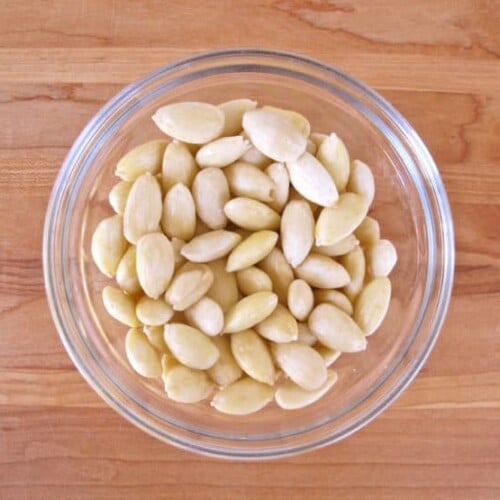
How to Blanch Almonds
Ingredients
- Raw unsalted almonds, more or less as needed
- pot for boiling, strainer
NOTES
Instructions
- Bring a small pot of water to a boil.

- Place your raw almonds into the boiling water. Let them boil for exactly one minute. Don’t boil for any longer than 60 seconds, or your almonds will start to soften.

- Drain the almonds immediately in a colander or strainer and rinse them with cold water to cool them.

- Blot the almonds dry with a paper towel. You’ll notice that the skins will be slightly shriveled.

- Use your fingers to gently squeeze the almonds and loosen the skin from them. Careful, if you squeeze too hard they’ll shoot across the room– which is fun, but not super practical! You can squeeze them from one hand into another to keep them from “launching” too far.

- Once you remove the skins, let the almonds dry off completely. Discard the skins.

- Now the almonds are blanched and ready to use in your recipe!

Nutrition

tried this recipe?
Let us know in the comments!
Note: Nutrition information above is for 1/4 pound blanched almonds.
If you enjoyed this recipe, I’d love it if you left me a star rating and comment below. Also, don’t forget to share and tag us on Facebook and Instagram!
FAQs
Yes, but they’re often more expensive, and pre-blanched almonds may not be as fresh. If you learn how to blanch almonds at home, you can save money and control the quality for your recipes.
Use blanched almonds in any recipe that calls for them specifically, or in recipes that use almond flour or smooth almond butter. All you have to do is grind the skinned almonds up into a fine meal or a smooth paste!
Some of my favorite blanched almond recipe options include marzipan, macaroons, French macarons, Middle Eastern almond cookies, and chocolate almond flour cake. They’re a fun decoration for various ice creams and cakes, too.
I also like to use them as a garnish in savory dishes like fresh salads, grain bowls, and stir-fries, or sliced and sprinkled over vegetables for a little added crunch and a subtle nutty flavor.
When stored in an airtight container, leftover almonds will stay fresh at room temperature for up to 6 months.

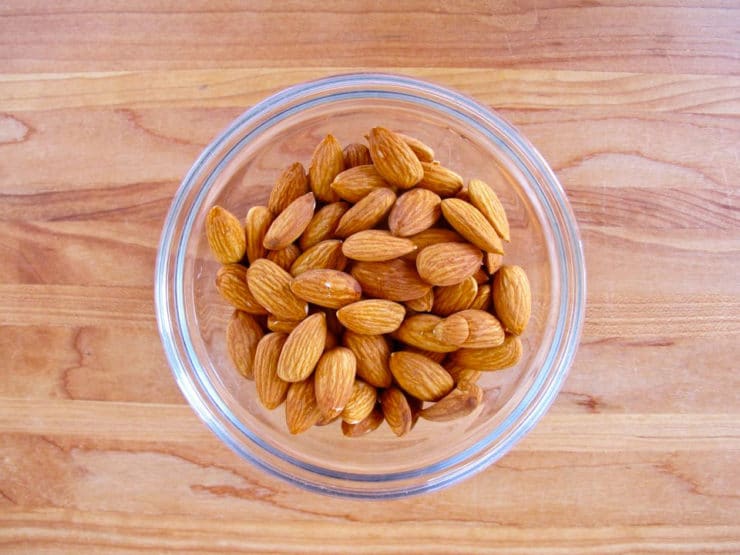
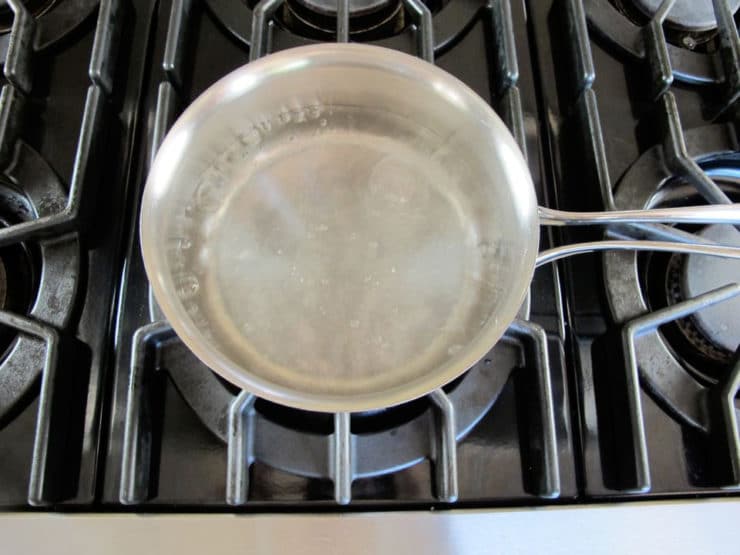
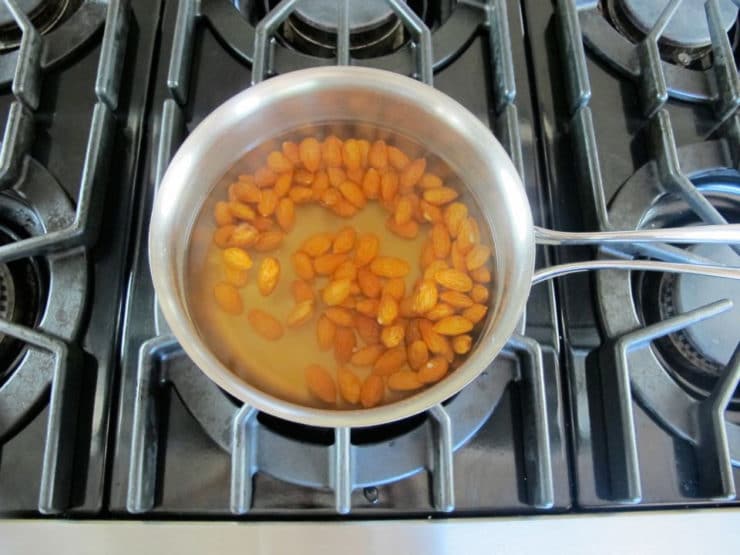
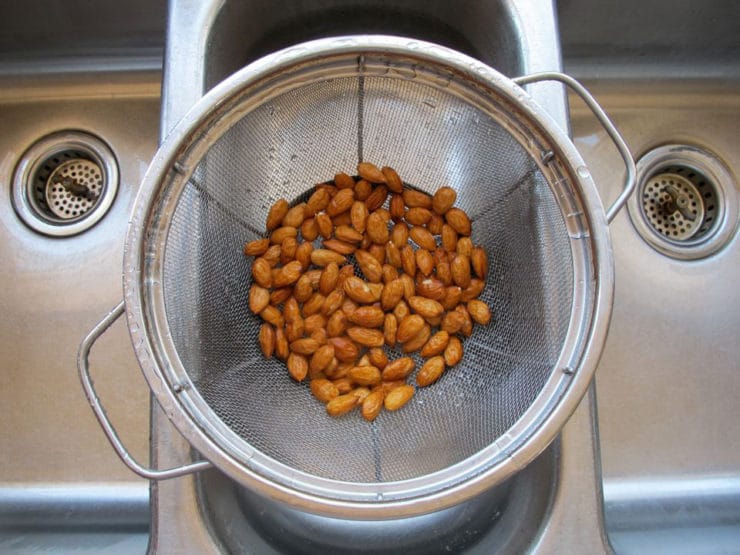

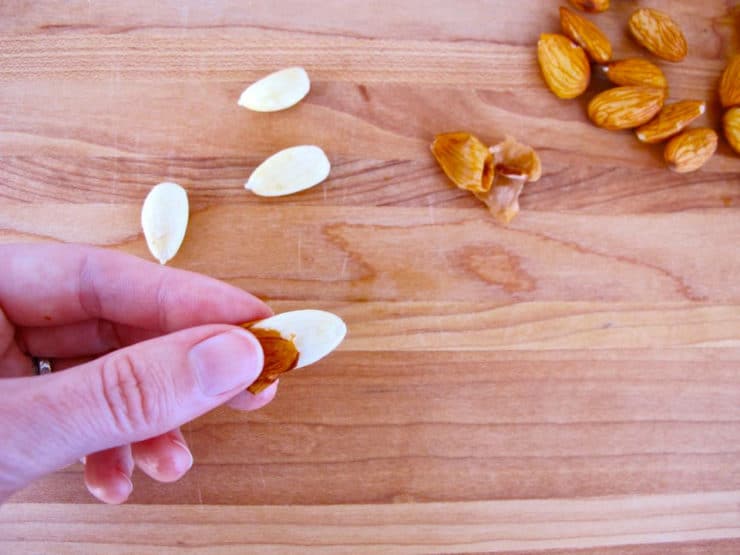
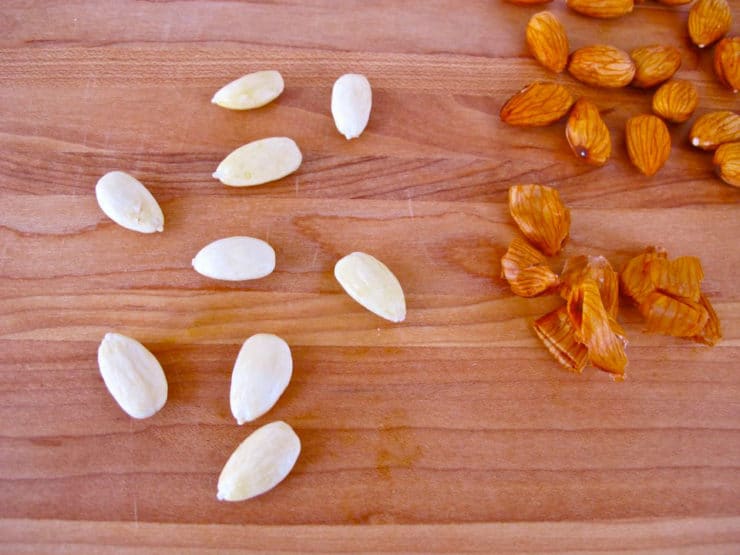


Thank you for these instructions. Easy to follow and worked like a charm. I will use the blanched almonds to make almond milk.